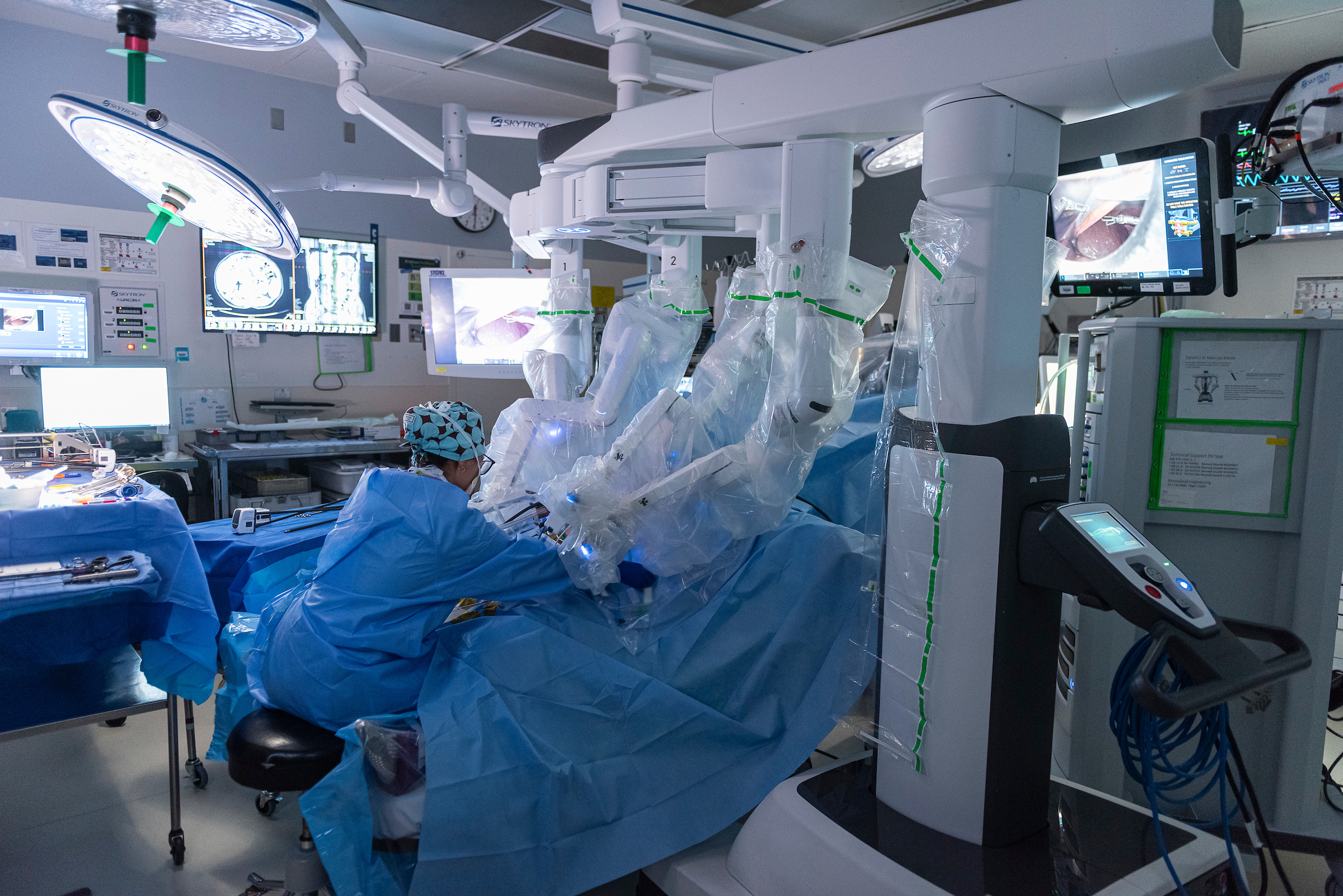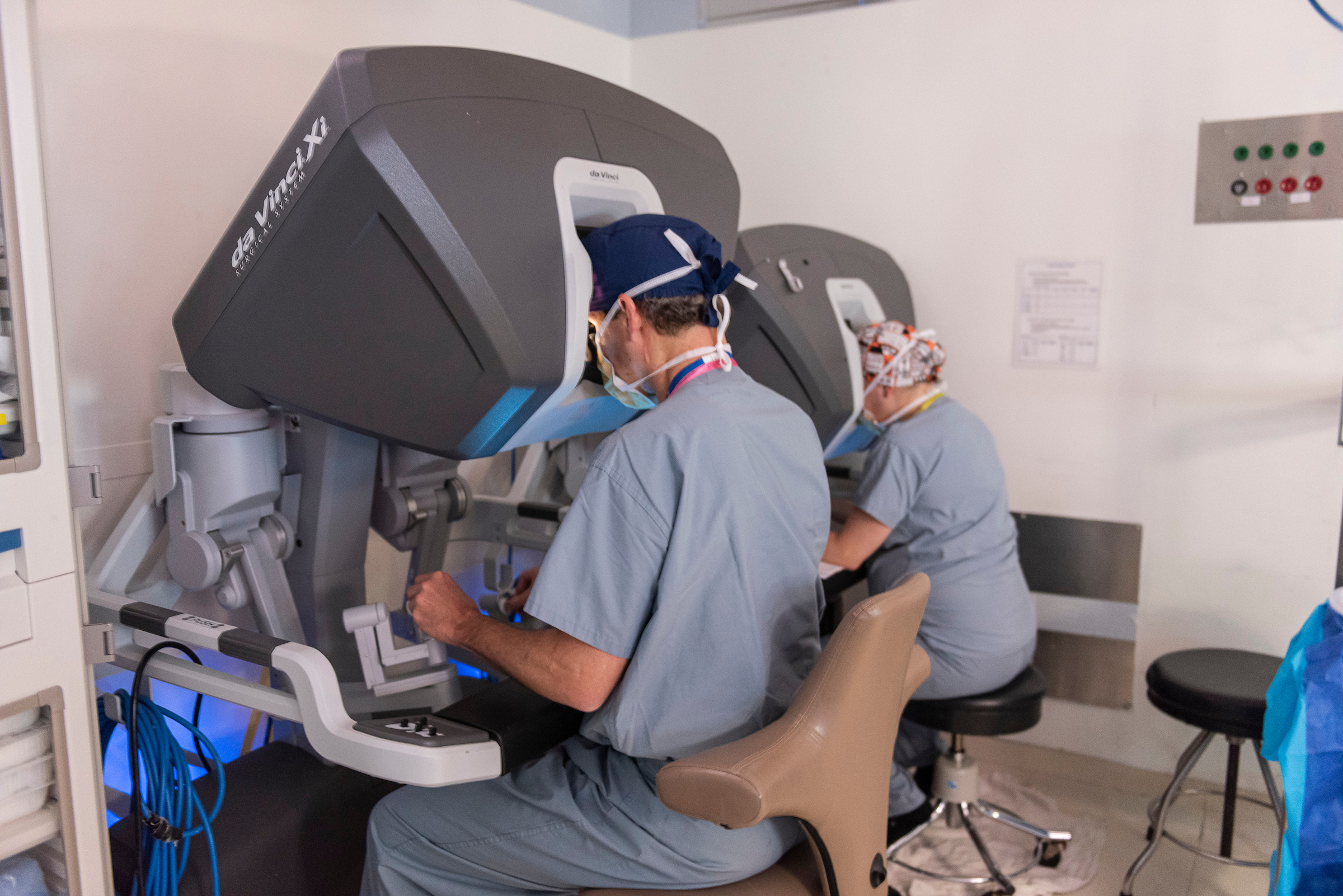 Thomas Clancy, MD, Director of Pancreas Surgery, Division of Surgical Oncology, Brigham and Women’s Hospital, and Co-Director, Pancreas and Biliary Tumor Center, Dana-Farber Brigham Cancer Center, discusses the teamwork, institutional support and innovation driving the program’s success and transforming care for patients across the northeast.
Thomas Clancy, MD, Director of Pancreas Surgery, Division of Surgical Oncology, Brigham and Women’s Hospital, and Co-Director, Pancreas and Biliary Tumor Center, Dana-Farber Brigham Cancer Center, discusses the teamwork, institutional support and innovation driving the program’s success and transforming care for patients across the northeast.
A: I believe what sets us apart is clearly the volume and complexity of minimally invasive pancreatic surgery happening at Brigham and Women’s Hospital. We are dedicated to innovation, and we can be innovative because we have such broad support from the administration, the operating room, nursing, and colleagues. The program requires more than technical surgical expertise; the institutional commitment is what truly sets our program apart and it is why we have the busiest and most successful minimally invasive robotic pancreatic surgery program in the Northeast.
A: I personally perform about 75-100 robotic procedures annually, with the majority addressing various types of cancer, particularly pancreatic disease. My colleague Dr. Jiping Wang, performs a similar number of robotic operations for a wide range of diseases. More of our colleagues in the Division of Surgical Oncology including Dr. Elizabeth Lilley and Dr. George Molina, are also developing robotic practices. Since starting robotic pancreatic surgeries in 2012, we’ve completed about 400 robotic distal pancreatic resections (removal of the left side of the pancreas). We began the robotic Whipple program in 2020, (a type of surgery that removes the head of the pancreas, part of the small intestine, the gallbladder and part of the common bile duct) and have completed over 130 robotic Whipple operations, currently up to about one per week.
A: Performing any operation in a minimally invasive manner has the promise of an easier recovery and quicker return to normal function. The Whipple operation, also called pancreaticoduodenectomy, is particularly complex and not easily performed with traditional minimally invasive techniques. Robotics allows many advantages over older technologies; for instance, it provides 3-dimensional magnified vision and wristed instruments that allow many degrees of freedom. This allows us to offer the benefits of minimally invasive operations to more complex interventions. Not every patient requiring the operation will be a candidate for robotic techniques, but for those who are candidates, recovery from surgery can be much easier.
A: The main benefit is the ability to perform the same operation with smaller incisions. This can lead to less pain, quicker recovery, decreased need for pain medications, a shorter hospital stay, and a faster return to normal activities. While it is certainly not proven, many robotic surgeons also feel that the superior tissue visualization provided by the robotic platform holds the promise of facilitating better cancer surgery.
A: Robotic surgery can be used for many types of pancreatic and gastrointestinal cancers, but not all. However, many patients may still need traditional “open” surgery with a larger incision. This can be the case if there is a significant number of nearby blood vessels, or if a patient has had many prior operations. Our goal is to offer a full range of options so that each patient receives the best treatment plan for their specific condition.
A: Surgery is useful in certain cases where cancer has spread; two examples in gastrointestinal cancer are colorectal cancer or neuroendocrine tumors that may have spread to the liver. In these cases, robotic surgery is often possible. In many other types of metastases, however, surgery will not have a role in treatment.
A: Training surgical residents in all aspects of surgery is a core part of our mission. Robotic surgical techniques are just one of many, many things for them to learn. We recognize that robotic techniques are increasingly utilized in surgery and will be a part of many of their careers. Modifying resident training to learn robotics is challenging with so many other things to master, but we see this as part of the future of surgery. We are very fortunate to have an incredibly talented and dedicated group of residents who are up to this challenge.
A: Robotic surgery can make surgery easier for patients, and we have seen this make a big difference in improving outcomes for our patients with pancreatic cancer. Ultimately, however, this is just one part of the challenge of treating cancer; future advances will definitely require better medications to treat the disease and maybe even reduce the need for an operation. Until that time, we are committed to making the surgical experience as safe, tolerable, and effective as possible for patients.
A: We hope to offer the highest possible level of care for all patients with pancreatic and gastrointestinal cancers, to continue to innovate and offer minimally invasive operations whenever possible, to grow our program and have the Brigham be the destination for minimally invasive pancreatic surgery, and to train the next generation of robotic gastrointestinal surgeons.


Dr. Clancy performing surgery using the minimally invasive surgical robot.
For over a century, a leader in patient care, medical education and research, with expertise in virtually every specialty of medicine and surgery.
About BWH